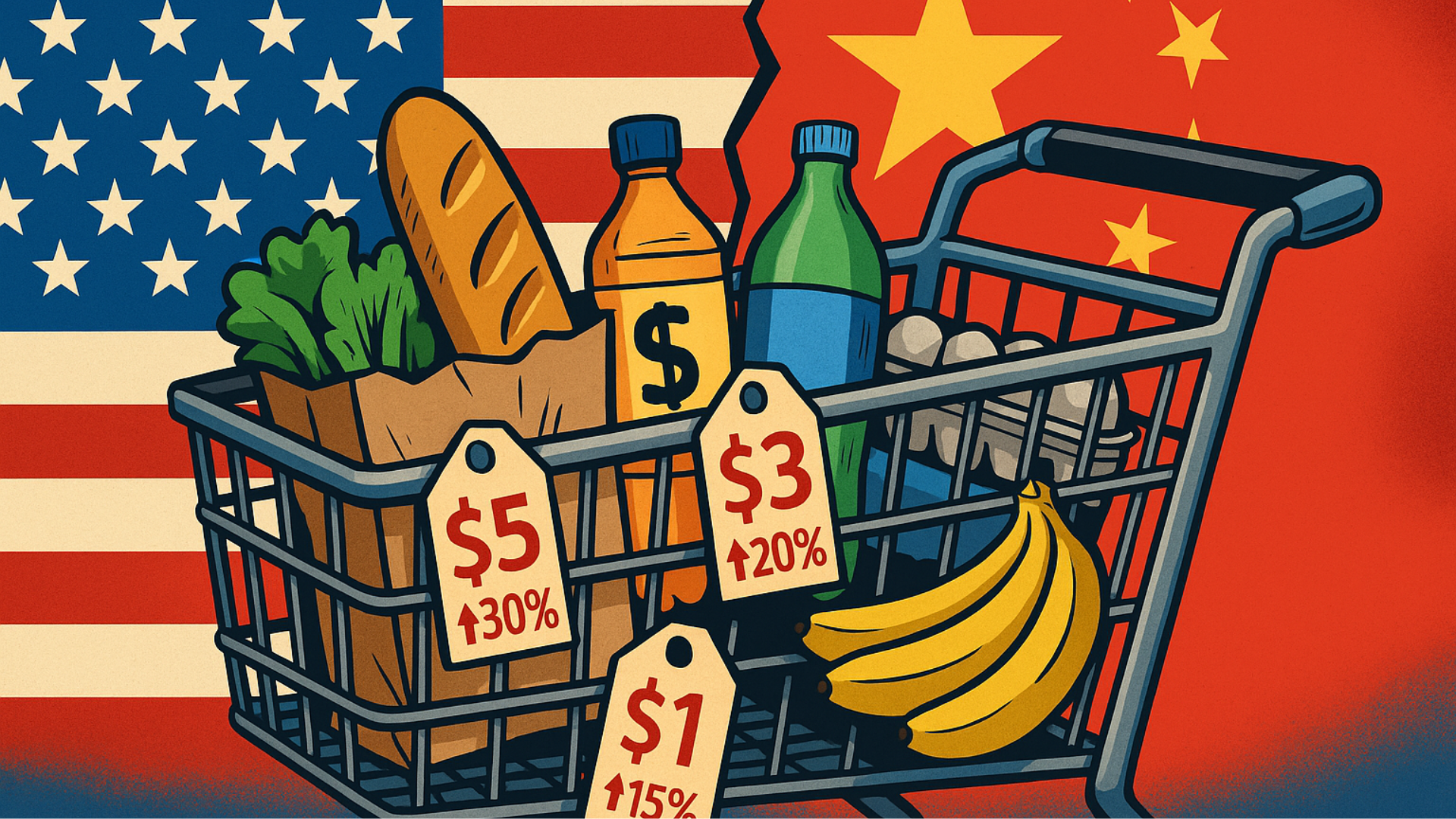By James Farias
Founder & CEO, Relief Strategies, LLC
Introduction
Earlier this year, I warned that a new wave of tariffs could bring higher costs to American households, especially for those already managing tight budgets or debt. With President Trump’s “Declaration of Economic Independence” now in effect, tariffs are influencing everything from the cost of groceries to monthly credit card statements. As in previous periods of economic protection, the true cost of these policies is being felt by everyday families.
2025’s Tariff Wave: The Reality Sets In
On August 1, the United States implemented new tariffs on hundreds of imported goods. Everyday items like electronics, furniture, clothing, and baby products are now more expensive. Retailers and manufacturers have responded by increasing prices, a move that was widely predicted even as public officials urged companies to hold prices steady. According to financial analysts and industry sources, the average family has seen their grocery and goods bills rise by five to eight percent in just the last month.
Economists note that the challenge goes beyond higher prices. The Federal Reserve Bank of New York recently said that persistent inflation is eroding household budgets, and consumer confidence is dropping. Major retailers have highlighted tariffs as a risk in their financial outlooks, and early reports suggest that price increases may continue as new inventories arrive this fall.
Internationally, the climate is unsettled. The European Union, China, and other major trading partners have signaled plans for retaliatory measures, raising the possibility of a longer trade dispute that could disrupt supply chains and affect jobs in industries tied to global trade.
Debt Levels at Record Highs: Why This Time Feels Different

These cost increases come at a time when Americans’ debt burdens are at an all-time high. The Federal Reserve Bank of New York reported that credit card debt reached $1.21 trillion in the second quarter of 2025, with late payments increasing. Subprime borrowers are struggling the most, now falling behind on payments at the fastest rate seen since before the pandemic.
Beyond credit cards, more Americans are missing payments on auto loans and other forms of personal credit. Financial journalists have observed that households are increasingly using credit to cover daily expenses, a trend that becomes more risky as borrowing costs go up and job security becomes less predictable.
If these trends continue, many families could face further pressure on credit scores, depleted savings, and greater financial uncertainty, especially for those living paycheck to paycheck.

Learning from Past Experience
History has shown that higher prices often cause families to rely more on credit, which can lead to more late payments and, in some cases, an increase in bankruptcy filings. The pattern appears to be repeating now. Economists describe the present situation as one where higher earners can adjust while lower- and middle-income families are left more vulnerable to financial setbacks.
Adding to the concern, experts warn that ongoing trade tensions and possible retaliation may result in layoffs or reduced hours for workers in industries directly impacted by changes in global trade policy.
How to Protect Your Household
If you’re feeling the financial effects of these changes, you are not alone. Here are steps you can take now:
- Review your budget. Track spending to recognize new expenses created by tariffs. Reduce nonessential purchases where possible.
- Maintain or grow your emergency fund. Even small amounts can help manage unexpected price increases or temporary losses of income.
- Avoid risky loans and limit new credit card charges. Try to keep balances manageable and stay away from high-cost emergency loans.
- Reach out to creditors early. If you expect difficulty making payments, contact lenders before a payment is missed to discuss options.
- Seek advice from reputable professionals. Nonprofit credit counselors or trusted debt relief firms can help you develop a plan for stability.
Final Thoughts
Tariffs are designed to protect domestic jobs and industries, but the financial side-effects can land quickly and unevenly across American households. As policymakers manage complex economic and fiscal risks, it is families—especially those already coping with debt—who often feel the direct impact. If rising costs or mounting bills are worrying you, remember that you do not have to face these challenges alone. By being proactive, making informed choices, and turning to professional guidance, you can put yourself in the best position to handle financial uncertainty.
Need Help?
Relief Strategies can walk you through your options and help you protect your future while addressing the stress today.
Visit ReliefStrategies.com or contact us at (888) 870-7922 for a free consultation.
About the Author
James Farias is the CEO of Relief Strategies, LLC, a firm dedicated to helping individuals achieve financial freedom through effective debt relief solutions. With over 30 years of business leadership experience and a deep passion for empowering others, James has guided many clients through the process of reducing debt and regaining control of their finances.
He understands how quickly debt can overwhelm even disciplined individuals and focuses on strategies that lower monthly payments, relieve financial stress, and create opportunities for a more secure future. Connect with James on LinkedIn or visit Relief Strategies to learn more about how he and his team can help you build financial confidence.
Sources:
U.S. News. (2025, July 21). Tariffs On Tap as August Approaches. money.usnews.com. https://money.usnews.com/money/personal-finance/articles/tariffs-on-tap-as-august-approaches
Federal Reserve Bank of New York. (2025, August 5). Household Debt Growth Remains Steady; Auto Loan Originations Pick Up. newyorkfed.org. https://www.newyorkfed.org/newsevents/news/research/2025/20250805
CNBC. (2025, August 5). NY Fed: Credit card debt reaches $1.21 trillion in the second quarter. cnbc.com. https://www.cnbc.com/2025/08/05/ny-fed-credit-card-debt-second-quarter-2025.html
Yahoo Finance. (2025, August 14). Trump tariffs live updates: US keeps AA+ rating as tariffs aid fiscal outlook. finance.yahoo.com. https://finance.yahoo.com/news/live/trump-tariffs-live-updates-117-year-high-in-volume-at-busiest-port-in-the-us-200619178.html

